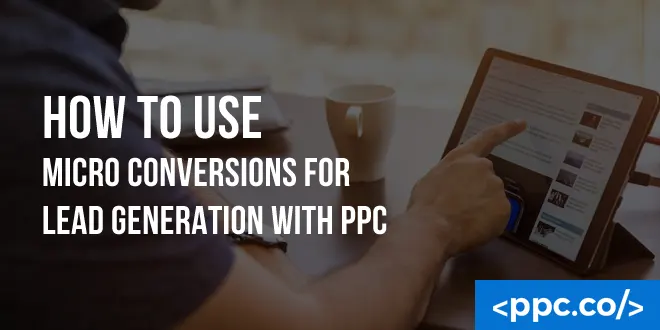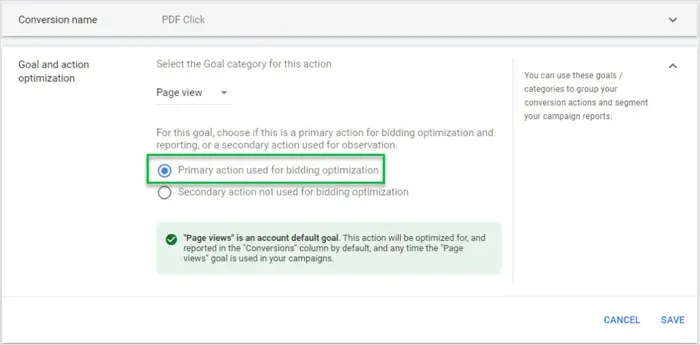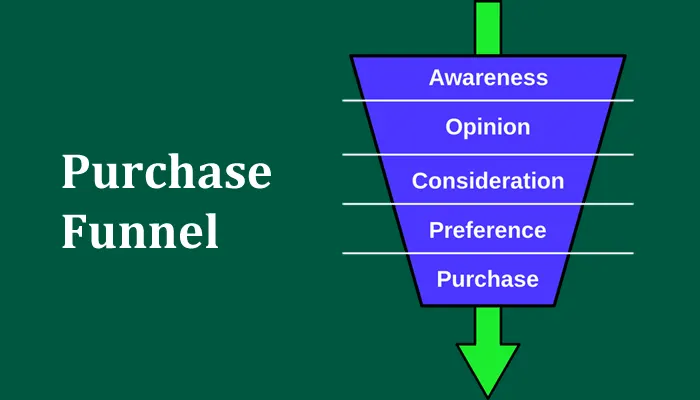


What is the gold standard key performance indicator (KPI) for most of your marketing and advertising campaigns?
You can measure traffic. You can analyze user behavior. You can track spending. And all of these variables are important.
But if you’re like most marketers, your attention is disproportionately fixated on conversions.
There’s some good reason for this; unlike these other variables, conversions are tied to actual value. When a user is converted, it means your company is either generating revenue or that it’s taken a meaningful step toward generating revenue.
But in the realm of pay per click (PPC) advertising, conversions aren’t everything. In addition to standard conversions, you should be tracking, measuring, and carefully considering “micro conversions.”
So, what exactly are micro conversions for PPC lead generation? And how do you use them effectively?
Table of Contents
Toggle
Let’s start by exploring why conventional conversions aren’t everything.
Imagine a conventional user behavior path. A user sees your ad, they click on it, they visit your landing page, and eventually, they convert. In a mainstream context, conversions usually refer to meaningful, revenue-generating actions like purchasing a product, signing up for a service, or filling out a form For more information.
It’s easy to see why this is meaningful to track. The higher your conversion rate is, the more valuable your landing page is; high conversion rates can support higher advertising spending and further growth free or business, while lower conversion rates can guide you to further optimizations.
But let’s imagine a less immediately understandable, but still impactful user behavior path.
A user sees your ad, they click on it, and they visit your landing page, just like in our earlier example. But they’re not truly convinced they need your product, and even if they were, they’ve never heard of your brand before. Instead of converting, they leave.
A few days later, they face a specific problem that your product is potentially capable of solving. They conduct a search for your business, remembering your brand name, and they read a bit more about your business and your core products, gathering more information as part of their due diligence. They’re still not convinced, but they’re thinking about your product seriously.
A week after that, this user revisits your website directly and eventually buys your product.
Here, we finally have a meaningful conversion, but if we only track this process conventionally, we will attribute this conversion only to a direct traffic visit. In reality, the conversion is at the end of a long chain of events – and this long chain of events started with a “micro conversion.”

What is a micro conversion in the world of PPC advertising?
This definition is somewhat subjective, but a micro conversion is typically considered any meaningful action taken by a user that wouldn’t count as a normal, full conversion – but could still result in desired behavior from that user in the near future.
It’s easiest to understand this through example. Here are some common examples of micro conversions that most brands experience.
Obviously, securing a micro conversion isn’t a guarantee that you’re going to secure a full conversion in the future. Accordingly, we can’t consider micro conversions to be as valuable or as meaningful as traditional conversions.
However, if we better understand and analyze micro conversions in the proper context, we can optimize our campaigns to win more of them and incorporate them into our other calculations more accurately.
For example, let’s say that we discover, through analysis, that a micro conversion results in a purchase approximately 35 percent of the time. If the average value of a conversion is $1,000, we can assume the average value of a micro conversion is $350.
With this information, we can optimize our ads, landing pages, and other materials to maximize micro conversions similarly to how we would maximize traditional conversions. If we can get a sufficiently high percentage of our visitors to micro convert, in addition to fully converting, our campaigns can become much more valuable.

So, how do you measure and analyze micro conversions in the context of your PPC campaign?
Here’s some good news. You can set up and track micro conversions in your Google Ads campaign the same way you would set up and track regular conversions. You’ll just have to create new metrics for each micro conversion you want to track.
If you want the micro conversion to apply to all of your campaigns, treat it as a primary conversion action. If you want the micro conversion to only apply to selected campaigns, create it as a secondary action.
From that point, you can group all your micro conversions together so they’re all tracked in the same column in your reports, or you can look at each individual goal specifically. One unfortunate downside of incorporating micro conversions into your campaign is that they could disrupt your ability to track and compare historical data; you won’t be able to make an apples-to-apples comparison if you start defining your conversions in a different way.

What steps can you take to improve your PPC lead generation with micro conversions?
These are some of the most important strategies:
The true value of tracking and analyzing your micro conversions is feeding you information that you can use to make your campaign more valuable over time. If you better understand the user behavior of “micro converted” users, you can make your landing page significantly more valuable.
Depending on your business, your niche, and your goals, that could mean creating separate landing pages for different target audiences, complete with different keyword groups, and with different goals; one could focus almost exclusively on full conversions, while the other focuses on micro conversions and audiences who aren’t ready to fully convert. It could also mean optimizing individual landing pages to offer conversion opportunities to all demographic groups simultaneously, though this is admittedly trickier to pull off.
It’s going to take time for you to understand the full context of each micro conversion you analyze. There’s almost no way to tell exactly how valuable a micro conversion is until you’ve spent a few weeks gathering data on converted users. But once you have this information, you’ll be in a much better position to optimize your landing pages effectively.
With this information, you can optimize your ads, your landing pages, and your other materials for appropriate users. You can create entire campaigns of ads for people in the earliest research phases of their decision-making process and create landing pages that are optimized to maximize micro conversions – and tweak those micro conversions to maximize their likelihood of leading to a full conversion.
Spend a few weeks gathering data on users early in your sales funnel and those willing to engage with your brand on a temporary or limited basis. You can do this while simultaneously pursuing your traditional conversion optimization goals. Once you gather enough information, you can start making more meaningful tweaks to your campaign.
If you swap out a piece of premium content with another, does that increase or decrease your micro conversion rate? What effect does it have on eventual conversions? What happens if you split your landing page into two different versions with two different goals? Does this landing page work better for a different keyword or group?
While not as financially impactful or behaviorally meaningful as traditional conversions, micro conversions are an important consideration for your Google PPC ad campaigns – and they’re definitely worth tracking and optimizing for.
After a few adjustments in the back end of your PPC campaign, you’ll be able to get more transparency into the subtler, yet measurably valuable little interactions taken by your users. And with that data, you can make your campaigns more effective in countless different ways.
Of course, tracking KPIs and optimizing PPC campaigns is a lot of work, especially if you don’t have much direct experience with managing PPC ads in the past. That’s why agencies like PPC.co – exist; we’re here to make things easier for you. Contact us for a free consultation today!
Please fill the below form to download the PDF
“*” indicates required fields.
Please fill the below form to download the PDF
“*” indicates required fields.
Please fill the below form to download the PDF
“*” indicates required fields.
Please fill the below form to download the PDF
“*” indicates required fields.
Please fill the below form to download the PDF
“*” indicates required fields.
Please fill the below form to download the PDF
“*” indicates required fields.